Computer-based 2025 GAMSAT: Humanities, Essays and Science Reasoning
GAMSAT is the Graduate Medical School Admissions Test, which is a computer-based exam designed, scored and developed by ACER (gamsat.acer.org) to assist in the admissions of students to graduate-entry programmes (medicine, dentistry, optometry, pharmacy, podiatry and veterinary science) open to graduates of any discipline. Candidates must have a bachelor's degree, or equivalent, completed prior to commencement of the degree. Participating programmes are located in Australia, Ireland and the UK with affiliated programmes in Poland, Cyprus, and Singapore (Duke-NUS).
GAMSAT had been delivered as a pen and paper exam since its inception in 1996; however, due to strict physical distancing protocols brought about by the COVID-19 pandemic, the March 2020 GAMSAT changed to become administered online and remotely proctored. In September 2020, GAMSAT remained in digital format but began to be held at selected test centres which has been established as the current and future standard: a computer-based, standardized examination. The timing and formatting of the real exam has changed 4 times since the onset of the pandemic with the most recent update occurring during the March 2024 testing window. Other modifications, introduced in 2022, but remain in effect: 1) students who live more that 3 hours from a test centre can apply to sit the GAMSAT at home with remote proctoring; 2) students could bring an erasable whiteboard (30 cm x 25 cm, or smaller) and marker to the test centre in lieu of the A4 sheets of scratch/scrap/note paper that the test centre provides; 3) the Section 1 subtest was extended with respect to the number of questions and the timing.
In 2024, for the first time ever, ACER decided that GAMSAT should be split into 2 separate testing windows. You will begin by sitting Written Communication (the essay section, formerly known as Section II) as a remote-proctored exam which you can sit at home. On a later date, in either March or September, you will sit the two multiple-choice sections (formerly: Section I and III) at a test centre, or remote-proctored if you are more than 3 hours from a test centre.
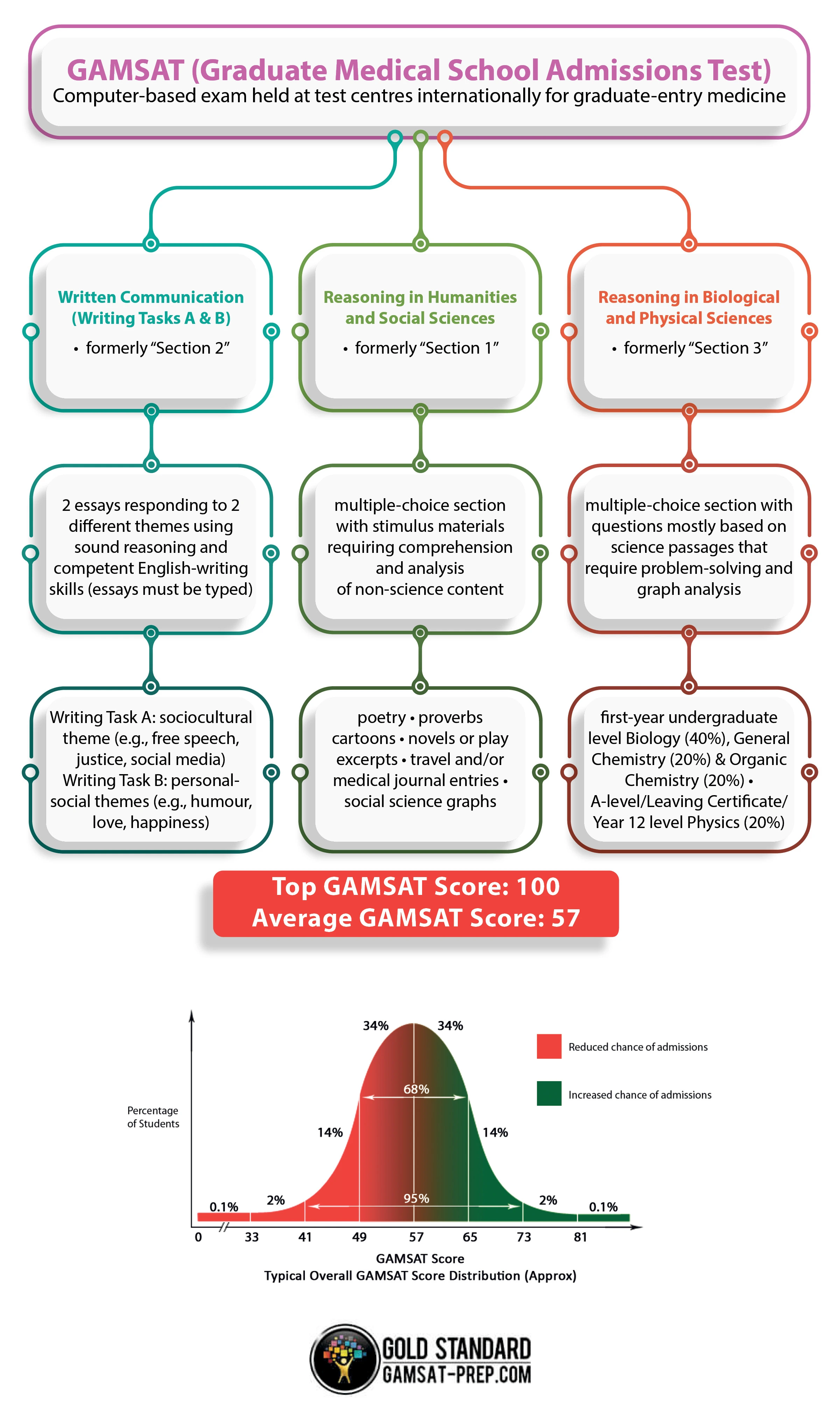
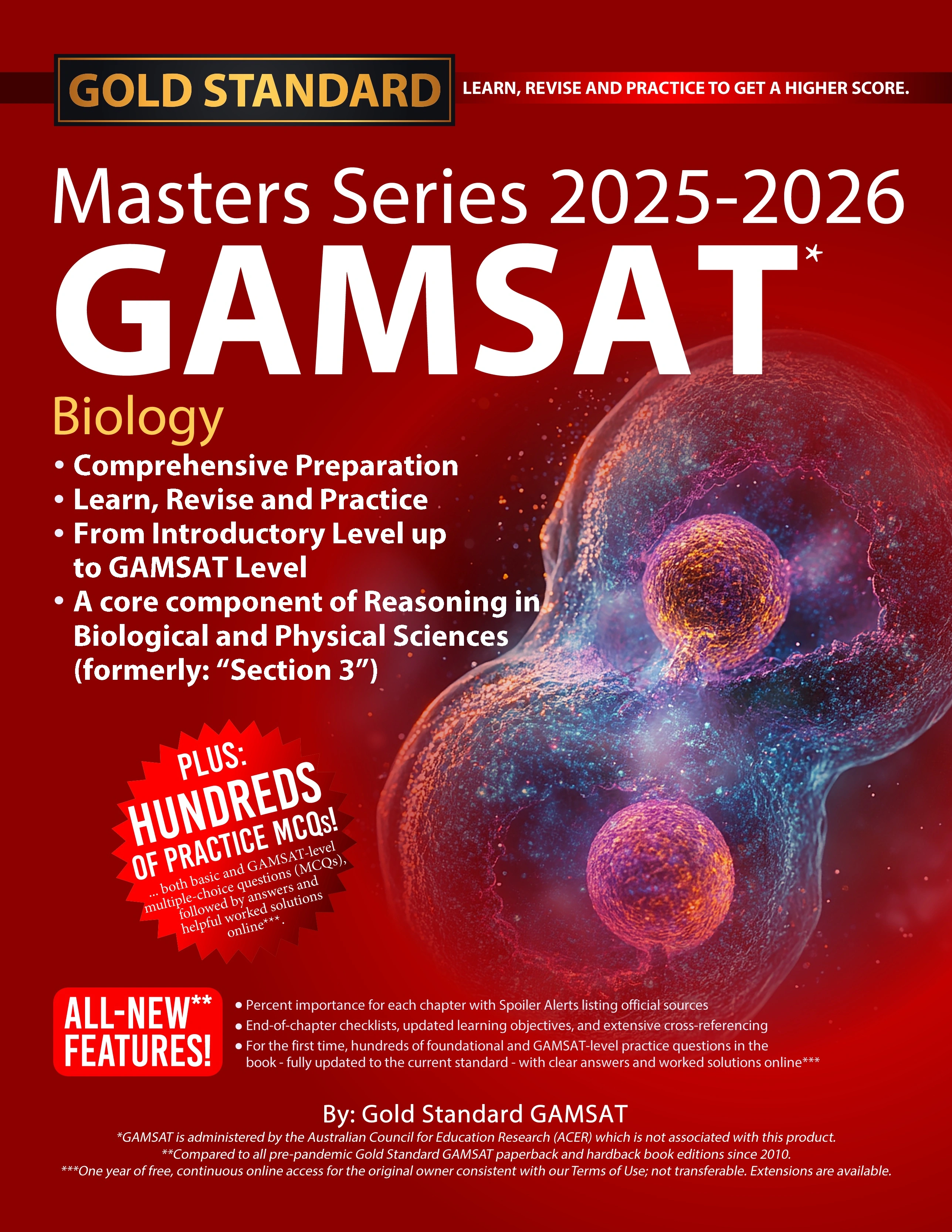
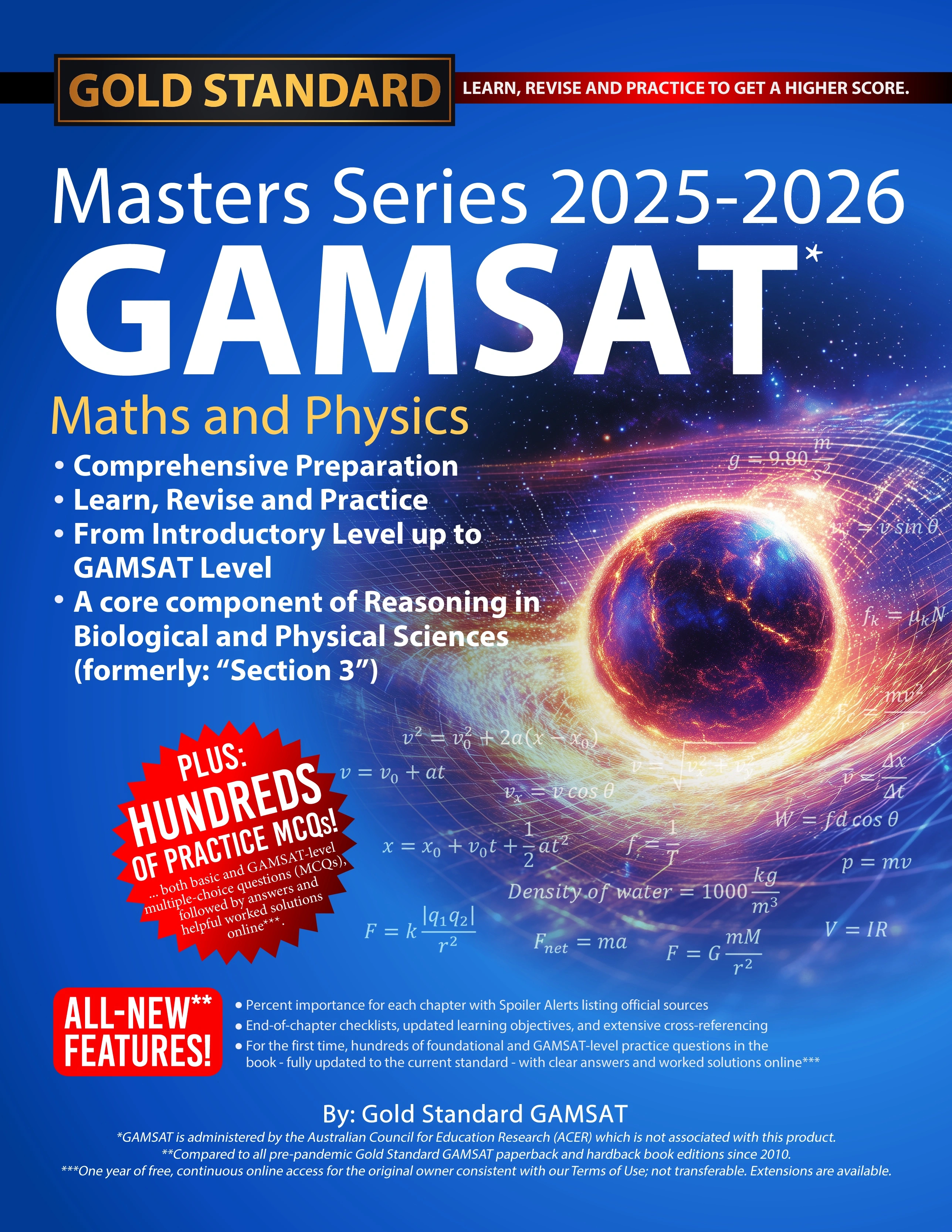

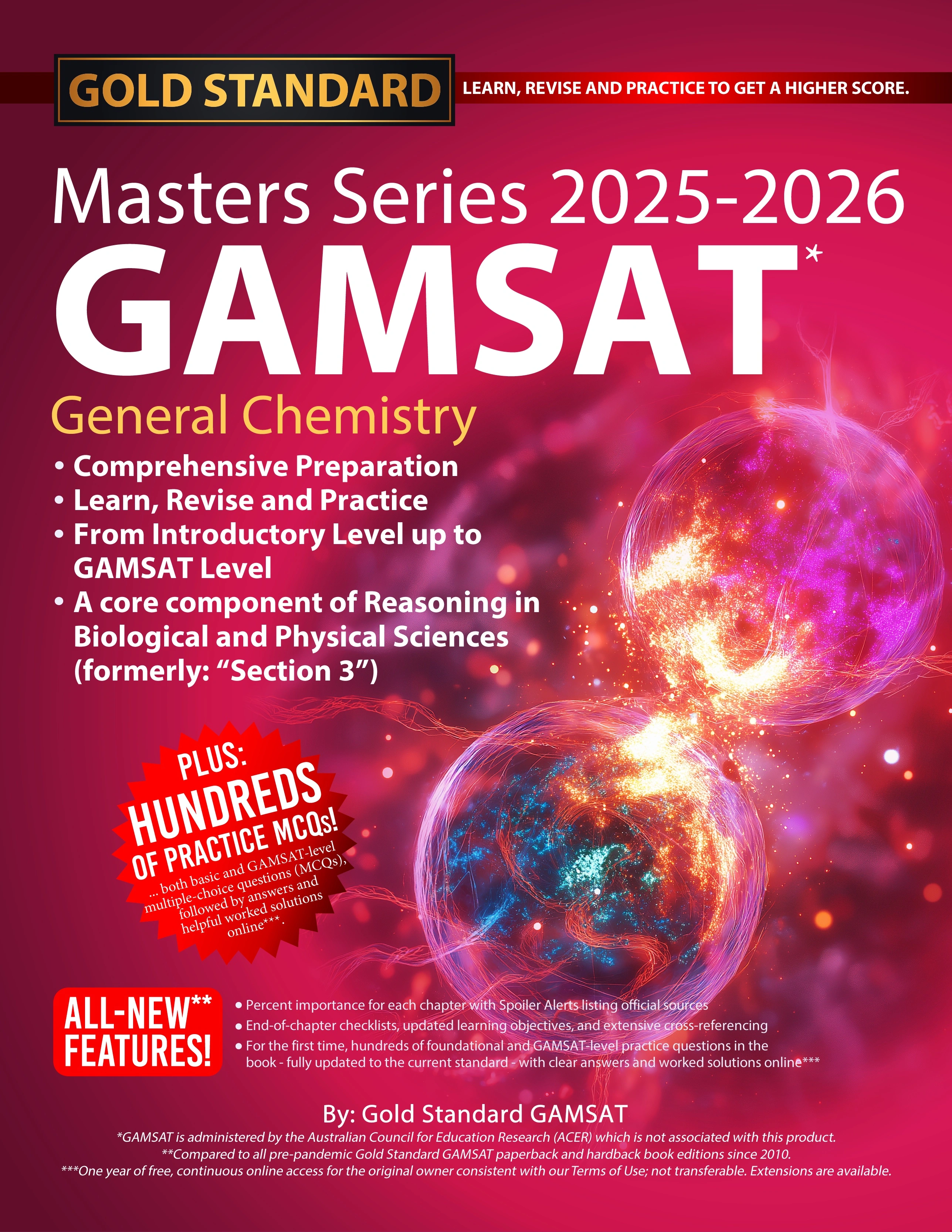

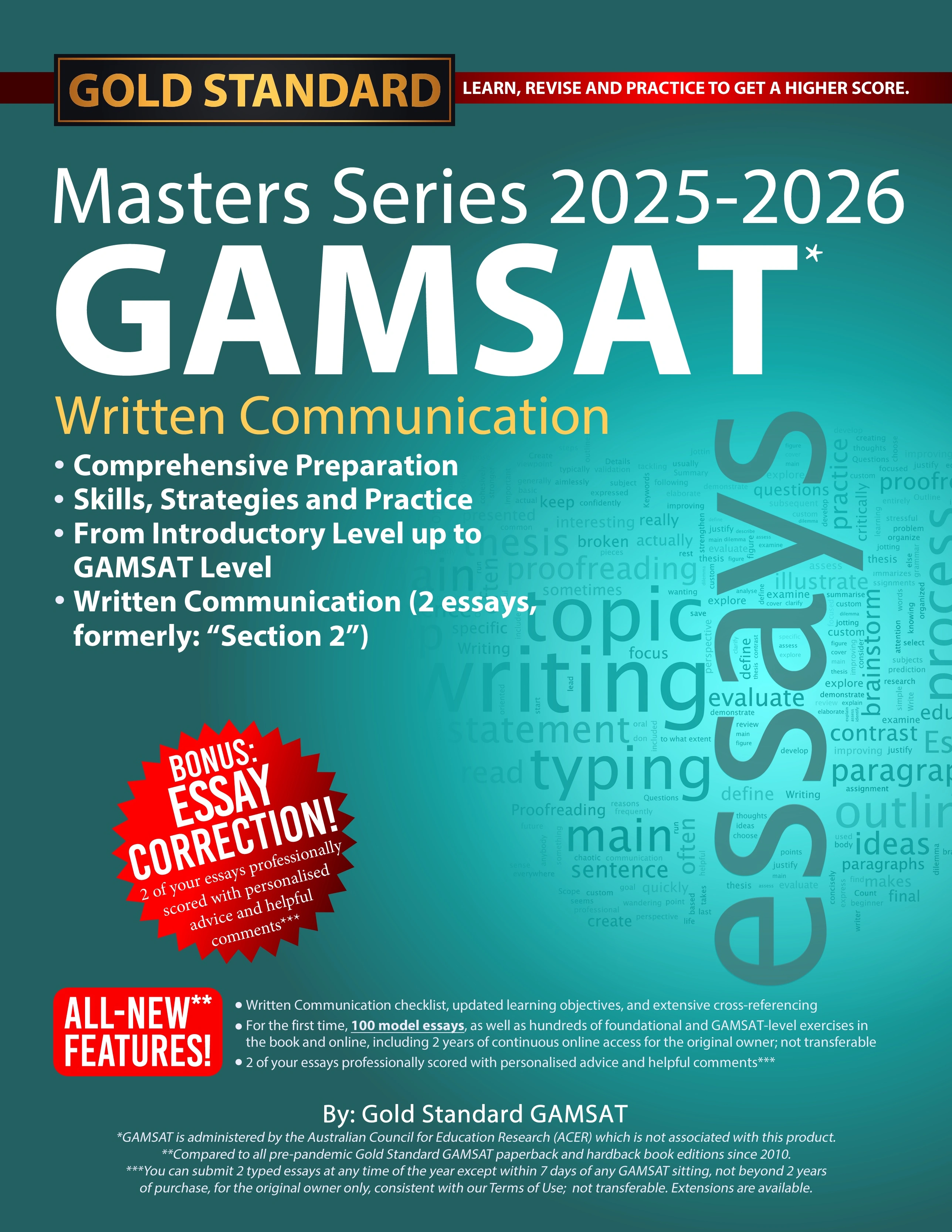

When can you sit the GAMSAT?
GAMSAT is offered twice a year, in March and September, including at computer-based test centres in Australia, the UK, and Ireland, as well as any international location via an online proctor. The following is a summary of a typical GAMSAT. Keep in mind that Written Communication, which is the essay section formerly known as Section II, will be on a separate day whereas the 2 multiple-choice sections (formerly: Section I and III), will be held on a subsequent day.
Summary of the new Digital-format GAMSAT |
|||
|---|---|---|---|
| Key Points | Event | Duration | |
| Written Communication (AKA Section 2) | Produce ideas in writing with clarity and soundness; essays are typed with no copy/paste function | 2 essays typed on a computer (you are permitted to present with 2 sheets of A4 scratch paper; option: whiteboard) |
65 minutes |
| Arrival and Sitting of Exam (multiple-choice sections only) | Bring only the acceptable ID documents and permitted items to the test centre as specified in ACER's GAMSAT Information Booklet | Security, identification | 45-60 minutes |
| Reasoning in Humanities and Social Sciences (AKA Section 1) | Key skills are reading speed and comprehension of information within socio-cultural contexts | 62 MCQs* (the test centre will provide you with 2 sheets of A4 scratch paper; option: whiteboard) |
100 minutes |
| Break | Consider packing your own food/snacks to avoid queues with nervous chatter | - | 20 minutes |
| Reasoning in Biological and Physical Sciences (AKA Section 3) | Analyse and solve problems: 40% Biology, 40% Chemistry (equally split between General and Organic); 20% Physics | 75 MCQs* (the test centre will provide you with 2 new sheets of A4 scratch paper to be used only for Section 3; option: whiteboard) |
150 minutes |
| Total Test Time | - | - | 5 hours, 15 minutes |
| Total Appointment Time | Success requires stamina; stamina improves with practice. | - | 7-9 hours** |
*MCQs: multiple-choice questions, 4 options per question with only 1 best answer. Note that the 'old' GAMSAT had a dedicated 'reading time' of 10 minutes for each of Section 1 and 3, and 5 minutes for Section 2. During that reading time, students were not permitted to write or mark their exam paper in any way. The new digital GAMSAT has added time for each of the 3 exam sections as a legacy to 'reading time'; however, in practice, you can use your exam time in any way that you see fit.
**It might be a good idea to allocate a whole day to sit the GAMSAT test to allow for any contingencies and/or technical issues that you might encounter. Before the 2020 sittings, the exam-day experience lasted more than 7 hours excluding added traffic and queues at the larger testing centres (i.e. Sydney, Melbourne, Brisbane, Perth, London, Dublin). Safety measures and health protocols should be carefully anticipated when making travel arrangements and accommodations to and from the testing centre.
Everything You Need To Know About The GAMSAT
Free GAMSAT practice:
- Free GAMSAT Practice Test - This timed practice test includes all three sections with instant scaled scores and helpful worked solutions.
- GAMSAT Practice Question of the Day - Develop your reasoning skills with daily practice, one subject at a time
- GAMSAT Physics Sample Questions - 15 free Physics sample questions with answers and worked solutions to hone your basic problem-solving skills and understanding of Section 3 material





















